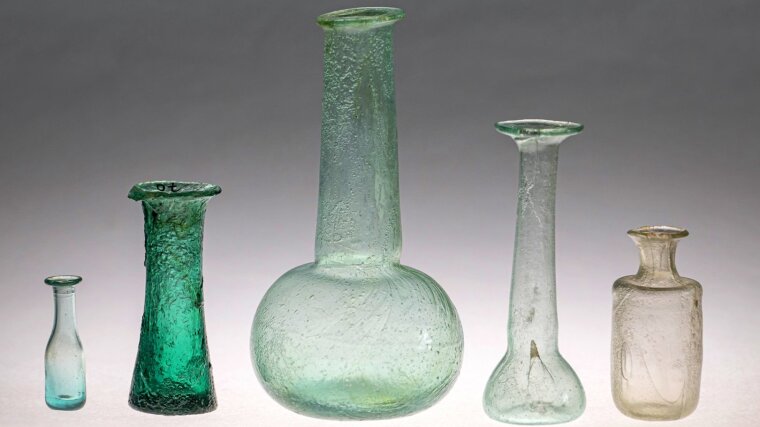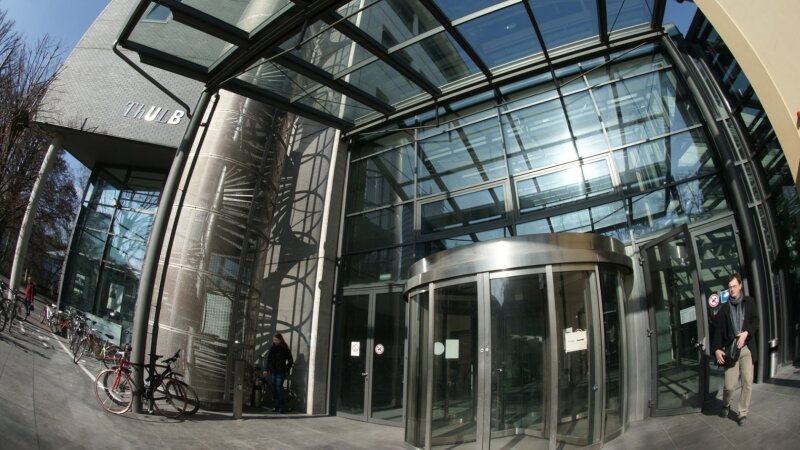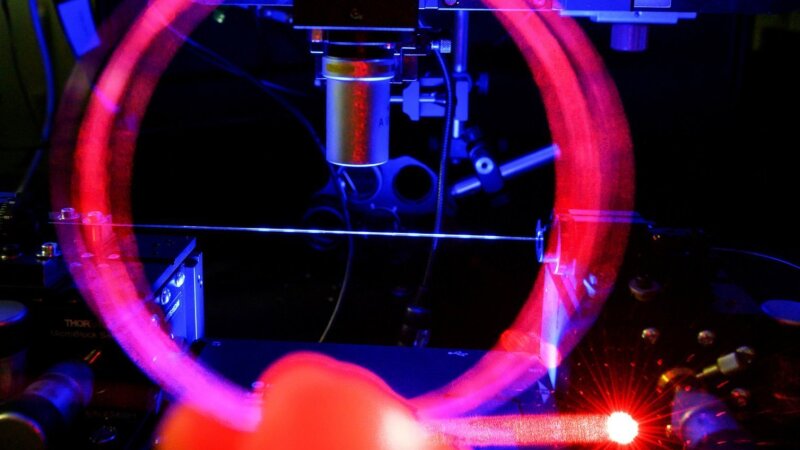
The possibility of producing glass, forming it and providing it with a wide variety of properties has repeatedly led to significant advances in human development: Glass containers allowed food to be stored and preserved for long periods of time; glass windows and bulbs brought light into gloomy buildings; fundamental discoveries have been made with the help of microscopes, telescopes and other optical devices containing glass lenses, mirrors or prisms; and fibre optic cables now span the entire globe, enabling real-time communication with maximum data capacity.
By Ute Schönfelder
Glass has accompanied us for thousands of years. The use of naturally occurring glass can be traced all the way back to the Stone Age, when sharp tools, spearheads and blades were crafted from volcanic materials such as »obsidian«. Other materials were formed when meteorites rained down on the Earth’s surface, melting sand and stone, as is the case with »tektite«. This could be used to make everyday objects and jewellery.
For a good 4,000 years, people have mastered the craft of making glass themselves and this has now found its way into almost every aspect of our lives. And yet, glass, arguably among the oldest man-made materials, is still shrouded in mystery. Glasses fascinate with their transparency, purity and gentle shapes. They are simultaneously solid and proverbially fragile. How do these qualities fit together? And what is glass anyway?
There are a few different answers to this question. Answer 1: Glass forms one of the two states that a solid can adopt. A solid either occurs as a crystal, i.e., its atoms are arranged in a periodic structure. This is the case with salts and metals, for example. Or the atoms of a solid are in disorder and there is no periodic lattice structure. This is known as an »amorphous« solid – and that is exactly what glass is.
The liquid aspect of glass
Answer 2: If we see glass from the perspective of its formation, it retains many aspects of a »liquid«. However, it is also solidified, and therefore, per se, not liquid. This is despite the transition being literally »fluent« and depending above all on the length of time for which the state is observed. Theoretically, if we stared at a window pane for long enough, we might well perceive it as a »waterfall« (although admittedly, not even the time that has passed throughout the universe’s existence would allow for that).
It is interesting to note that from both answers it follows that almost any melt can be converted into a glass: It is not the chemical composition that determines the glassy state, but structural disorder and the thermo-kinetic conditions. The widely known »quartz glass« consists of silicon dioxide (SiO2), just like crystalline quartz. In both forms, the material consists of silicon and oxygen atoms arranged in symmetrical tetrahedra.
While these structural units in the crystal are linked to one another at fixed angles and thus form a highly ordered structure in which every atom has a fixed place, these crosslinking angles vary in the glass. This difference arises when the liquid melt cools down: If this happens very slowly, the structural units have enough time to arrange themselves in an ordered structure. If the melt is cooled down quickly, however, there is not enough time for the structural units to form a crystal. Instead, the melt solidifies in the form of a glass.
Glass is therefore defined as a thermokinetic state. Due to its character as a »frozen-in liquid«, glass also has properties very similar to real liquids. For example, it does not scatter light, it has a glossy surface, and it exhibits fracture properties similar to those of liquids (although on different timescales).
How glass is made
In order to produce glass, we only need a few raw materials that are available almost everywhere in the world: quartz sand, lime, soda or potash. The first methods of glass production are thought to have been developed in Mesopotamia and Egypt around 3,000 BC, where crushed quartz stone was mixed with vegetable ashes and then melted in several steps into glass ingots, which were further processed into items such as jars, goblets, and jewellery. The glass could be stained in various shades by adding metal oxides or aqua regia.
When the glass-blowing tube was invented around 100 BC, larger vessels with thinner walls could be produced such as drinking glasses, carafes, and other containers. In the 12th century, round windowpanes were then used in church windows (crown glass), which were given their shape by spinning out a pre-blown glass sphere. The development of more sophisticated rolling processes in the 17th century then allowed larger windowpanes to be produced.
Glass façade of the Thuringian State and University Library Jena.
Image: Jan-Peter Kasper (University of Jena)The Glass Age
Today, glass can be fabricated for specific applications in almost any shape and composition – from optical glasses and glass ceramics to flexible displays, optical fibre cables, solar module covers and building materials. Depending on the desired properties of the glass, other additives can be used: For example, boron oxide changes the thermal, chemical, and electrical properties of glass, while aluminium oxide increases its fracture strength.
In addition to classic silicate glasses, other forms of glass can be produced that use other oxides or non-oxide components as the glass-forming substance instead of silicon dioxide, such as phosphorus and boron oxides, leading to the formation of bio-active phosphate glass or highly resistant borosilicate glass. For laser optics, glass is doped with various exotic components which help to conduct, generate, and intensify light.
In even broader terms, many further engineering materials are also glasses, i.e., »frozen-in liquids«. For example, we can find high-strength metallic glass, infrared-transparent chalcogenide glass and many more varieties. This much is sure – glass isn’t just glass. It is diverse, versatile and ubiquitous. The world today is a world of glass.
Glass fibres in a laboratory of the Institute of Applied Physics at the University of Jena.
Image: Jens Meyer (University of Jena)
